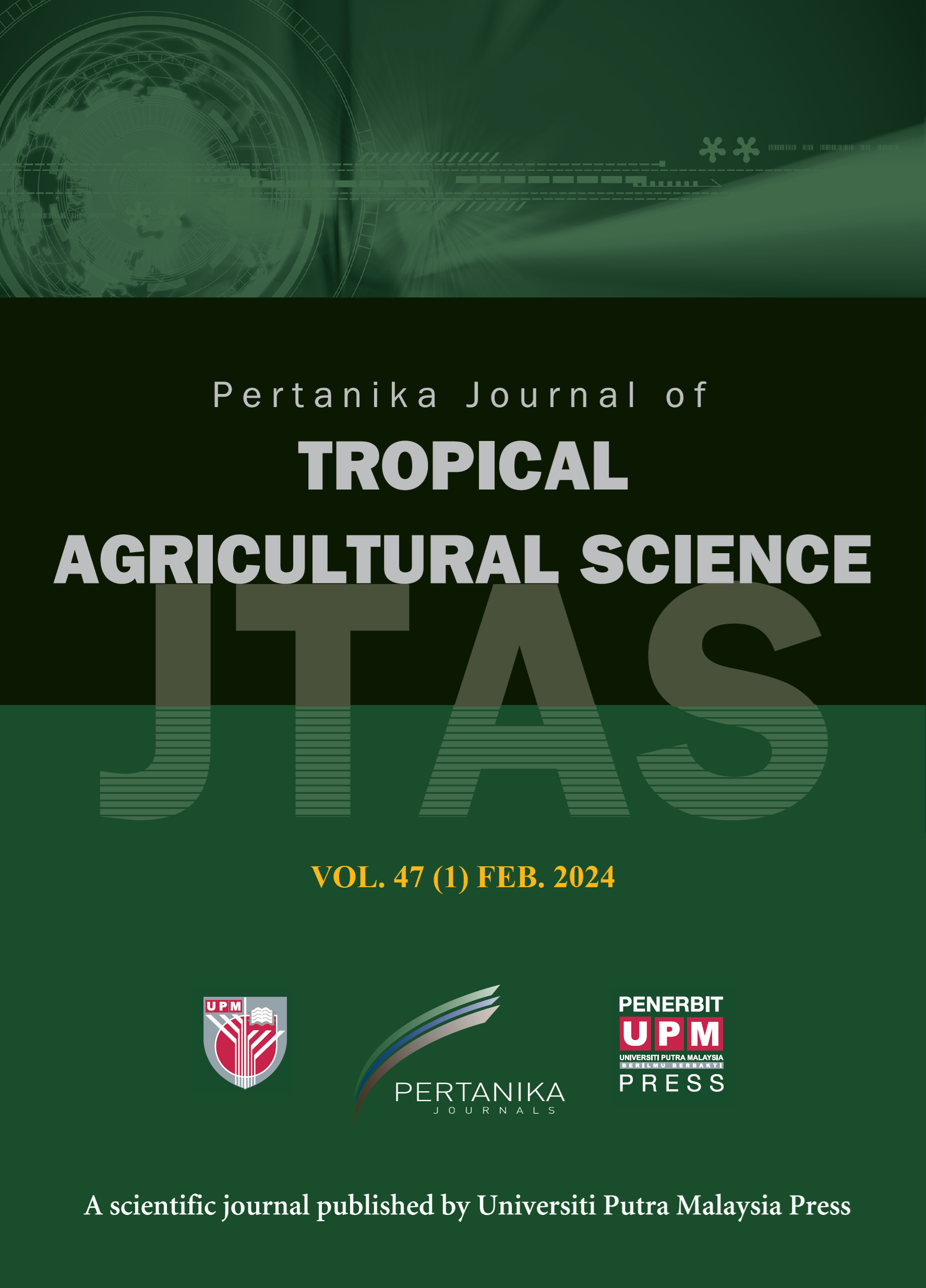PERTANIKA JOURNAL OF TROPICAL AGRICULTURAL SCIENCE
e-ISSN 2231-8542
ISSN 1511-3701
Influence of Flooding Intensity and Duration on Rice Growth and Yield
Abdul Shukor Juraimi, Muhammad Saiful, A.H. , Mahfuzah Begum, Anuar, A.R. and Azmi, M.
Pertanika Journal of Tropical Agricultural Science, Volume 32, Issue 2, August 2009
Keywords: Keywords: Oryza sativa L., minimal water condition, water regime treatments, glasshouse condition
Published on:
An experiment was conducted in the glasshouse of the Faculty of Agriculture, Universiti Putra Malaysia (UPM) in 2005 to evaluate the effect of different flooding treatments on rice growth and yield. Five flooding treatments were used, namely T1 = continuously flooded condition until maturity, T2 = early flooding until 55 DAS (day after sowing) followed by saturated condition until maturity, T3 = early flooding until 30 DAS followed by saturated condition until maturity, T4 = continuous saturated condition until maturity, T5 = continuous field capacity condition throughout the experiment period. The results showed that the response of rice plant to water soil availability varies with its growing stage. At an early stage of rice plant growth (15 and 30 DAS), flooding treatments were found to not affect the growth of rice plant significantly. However, from 45 DAS onwards, the effect was significantly pronounced. All flooding regimes (T1, T2 and T3) significantly favoured rice plant height and the number of tillers as compared to non-flooded regimes (T4 and T5). The positive correlation was observed between the grain yield and yield components. The significant higher number of tillers, high spikelets/ panicle and high 1000-grain weight had contributed to higher grain yield of rice in T1, T2 and T3 as compared to T4 and T5. Shorter duration of flooding (T2 and T3) was found to give a similar performance to continuous flooding, and thus, these methods might save on water use without reducing yields, while over watering might just increase vegetative growth.
ISSN 1511-3701
e-ISSN 2231-8542




